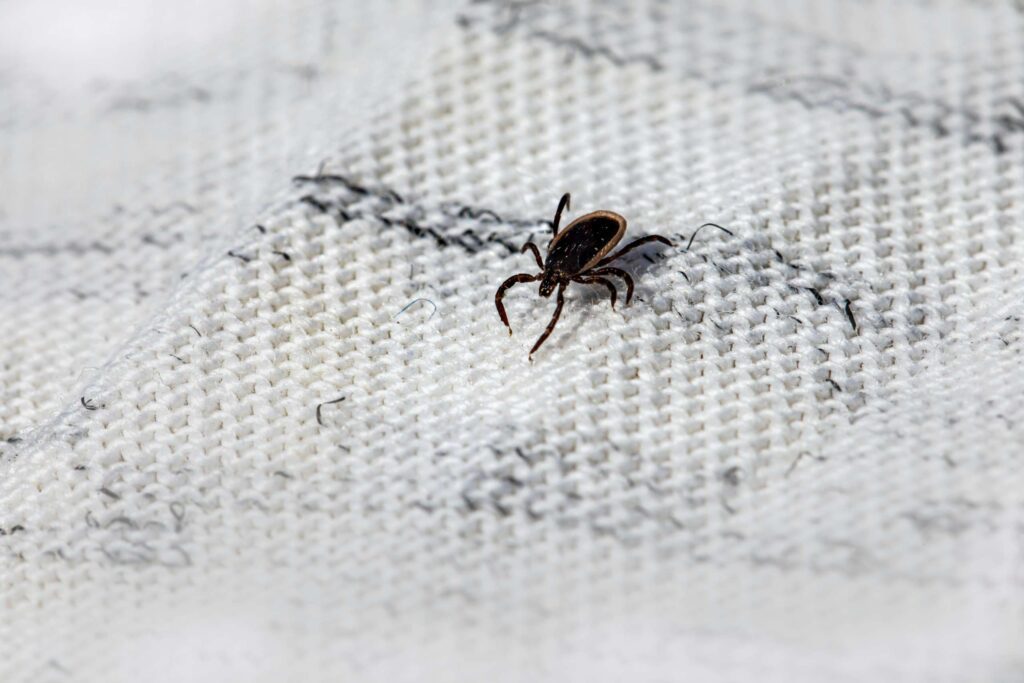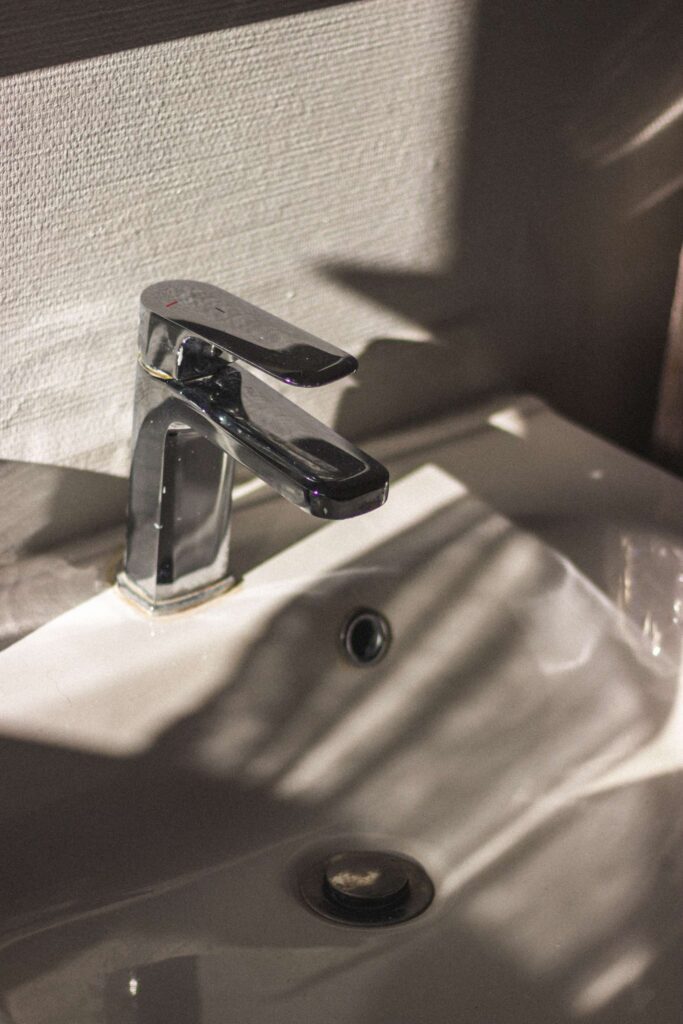Fall is a time for apple orchards, wearing plaid, carving pumpkins and watching the leaves change. It is definitely not a time for bugs. So why are these irritating insects sticking around?
Boxelder bugs, wasps, hornets and Asian beetles hit their stride in the cooler months of fall. Luckily we have some tips and tricks for keeping these pests outside of your home this autumn.
BOXELDER BUGS
Boxelder bugs are commonly found on or around Boxelder trees, which is where they get their name. These bugs can also be found around maple or ash trees. Boxelder bugs grow to around a ½ inch and have flat, oval-shaped bodies. Their coloring is dark brown or black with reddish-orange markings along their wings and abdomen.
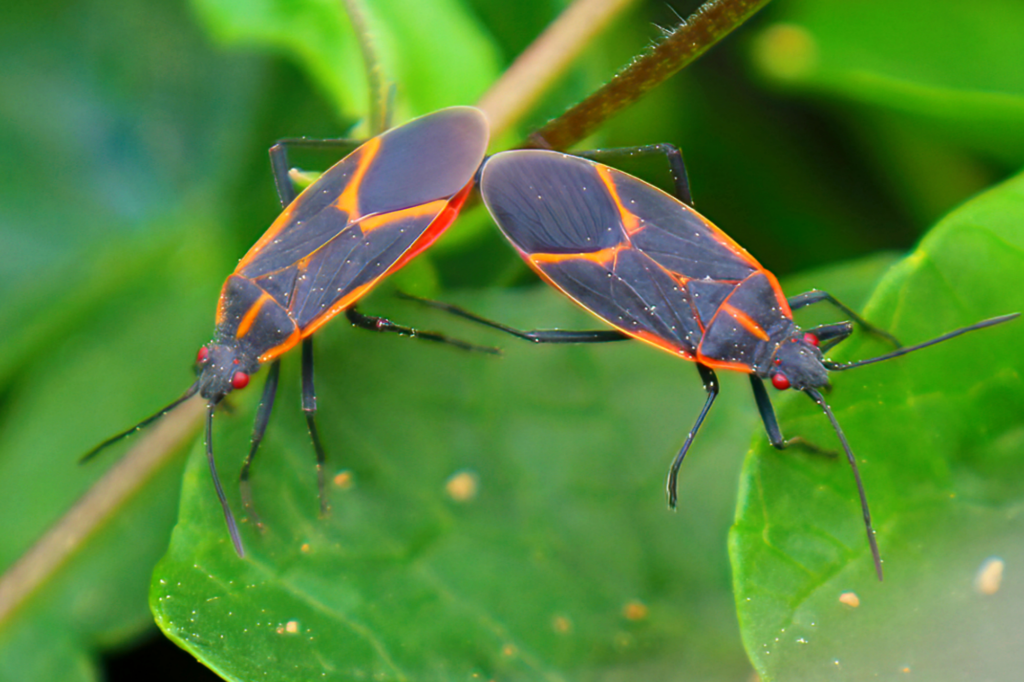
Boxelder bugs like warm weather so during the autumn months they come out from their summer homes in the trees to search for spots to sunbathe. These bugs like to congregate in large groups on the south side of buildings, roofs, trees or rocks to soak up the warmth from the sun. At the end of fall, boxelder bugs will begin their group migration into nearby buildings and homes to overwinter in.
Boxelder bugs can sneak through small cracks and crevices, looking for warm spots to keep them cozy during the winter months. Boxelder bugs are more of a nuisance pest since they don’t sting or cause disease. However, when crushed or handled roughly these bugs let off a nasty odor, and their feces can leave reddish-orange stains.
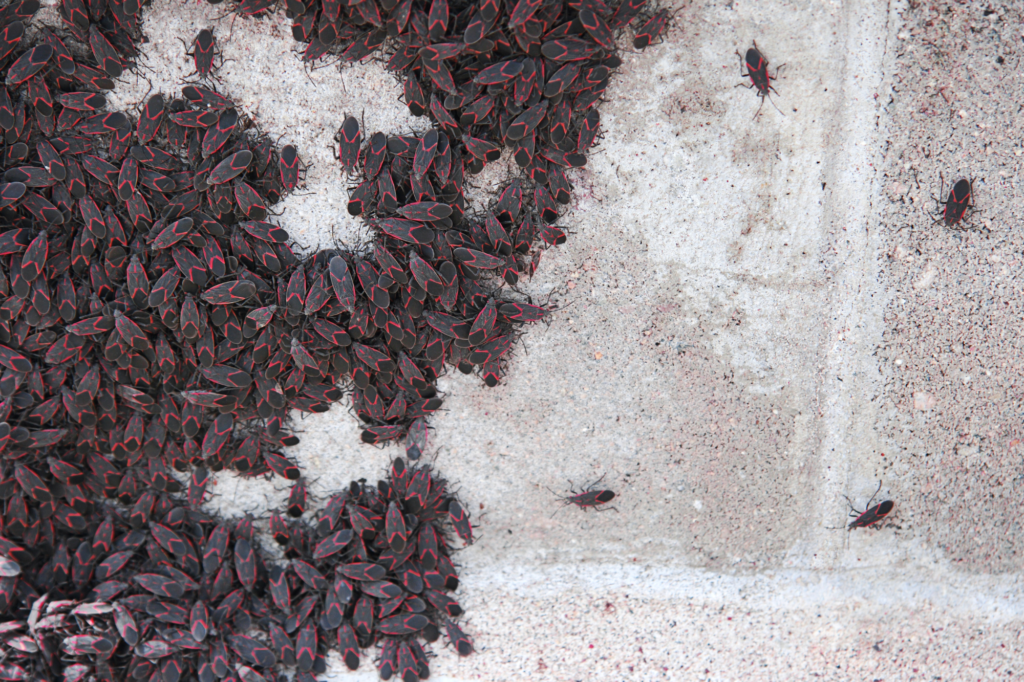
HOW TO PREVENT BOXELDER BUG INFESTATIONS:
To prevent boxelder bugs from invading your home take the proper precautions and conduct regular maintenance on your home. Such as repairing holes in screens and sealing all cracks and crevices in and around your house.
To get rid of boxelder bugs on the outside of your house you can try mixing together a simple solution of dish soap and water. Add a tablespoon or so of liquid dishwashing soap to a spray bottle full of water and shake to combine. Spray this mixture directly on any bugs you see.
If you have a persistent boxelder bug problem or suspect an infestation, a licensed pest control professional should be contacted to evaluate and assess the problem.
WASPS & HORNETS
Wasps and hornets can be seen buzzing around from as early as March and April to as late as November. Here’s how to identify the difference between these two stinging insects.
Wasps are slim and have narrow waists and legs. They have two sets of wings and a thin abdomen. Wasps are smaller than hornets and typically have black and yellow markings.
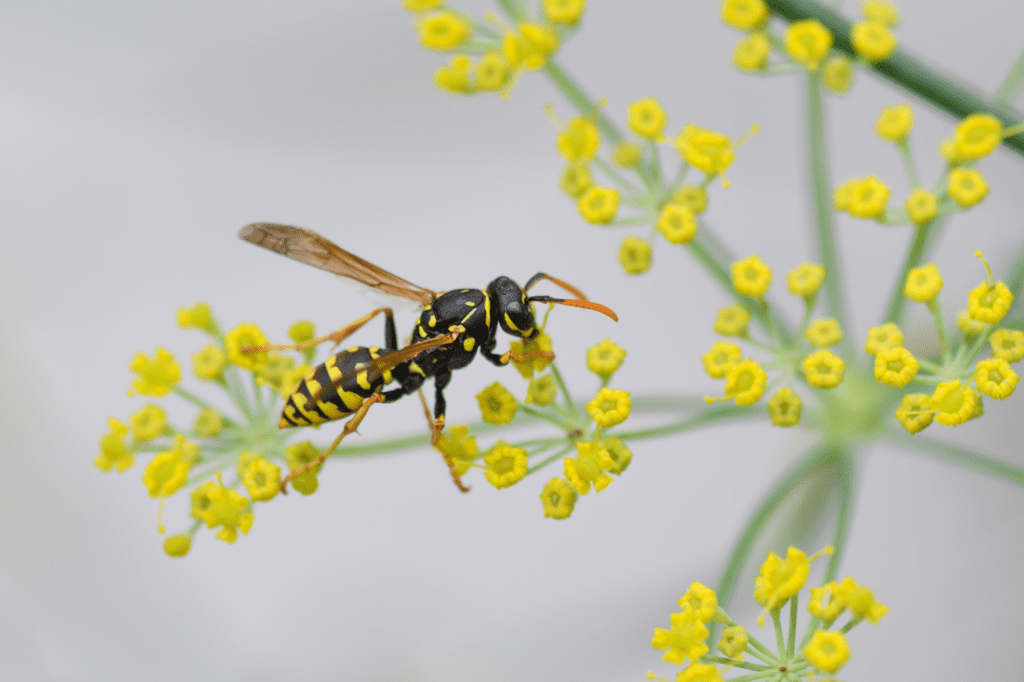
Hornets have wider heads and larger, more rounded abdomens than wasps. The colors and markings of hornet species also differ from wasps. The two most common types of hornets in the United States are the Bald-Faced hornet and the European hornet. The Bald-Faced hornet will have black and white markings while the European hornet will have an orange head and yellow bottom.
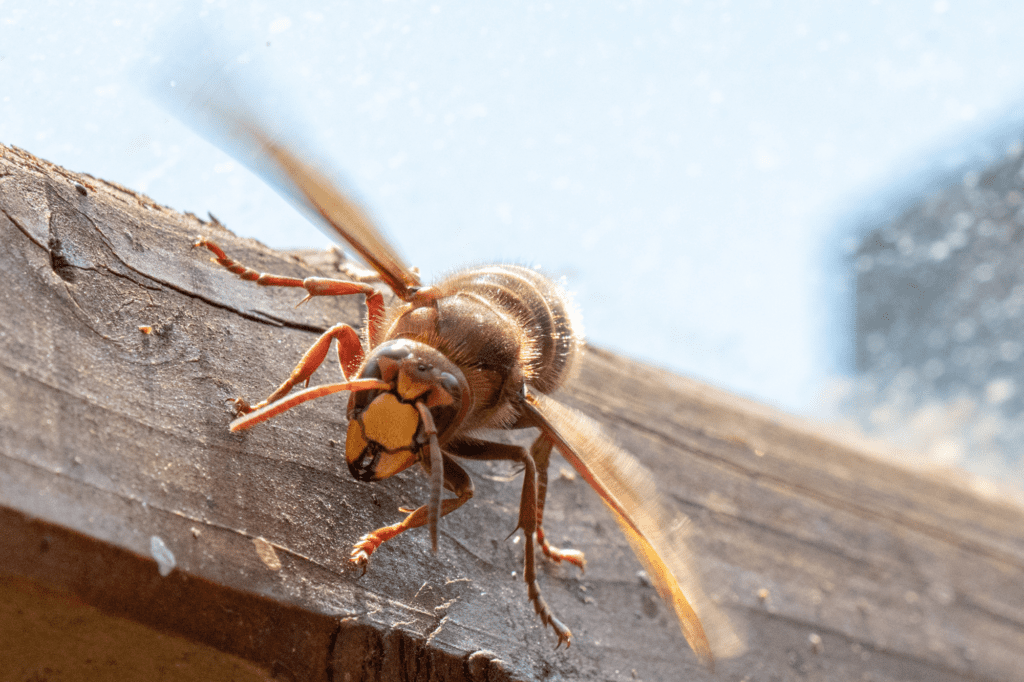
You may notice more wasps and hornets during September, October and even into November. This is due to the changing weather and their depleting food sources. In the fall wasps and hornets begin looking for a place to hunker down for winter and they’re notorious for overwintering in homes. Wasps and hornets are more aggressive in the fall as their natural food sources begin depleting. So be careful around these stinging insects in the autumn months.
HOW TO PREVENT WASP & HORNET INFESTATIONS:
To prevent wasps and hornets from overwintering in your home make sure to seal all cracks and open entry points in and around your property. Repair holes you may have in your window or door screens and check around your home for nests. You will also want to cover any garbage cans or compost piles and remove any outside food sources.
If you suspect a wasp or hornet infestation a licensed pest control professional should be contacted to evaluate and assess the problem.
ASIAN BEETLES
Asian beetles are about a ¼ inch long with oval bodies. Their coloring varies from tan to orangish-red. They can have many or no spots at all. The distinct feature of an Asian beetle is the “M” marking on the white area by the base of their head.
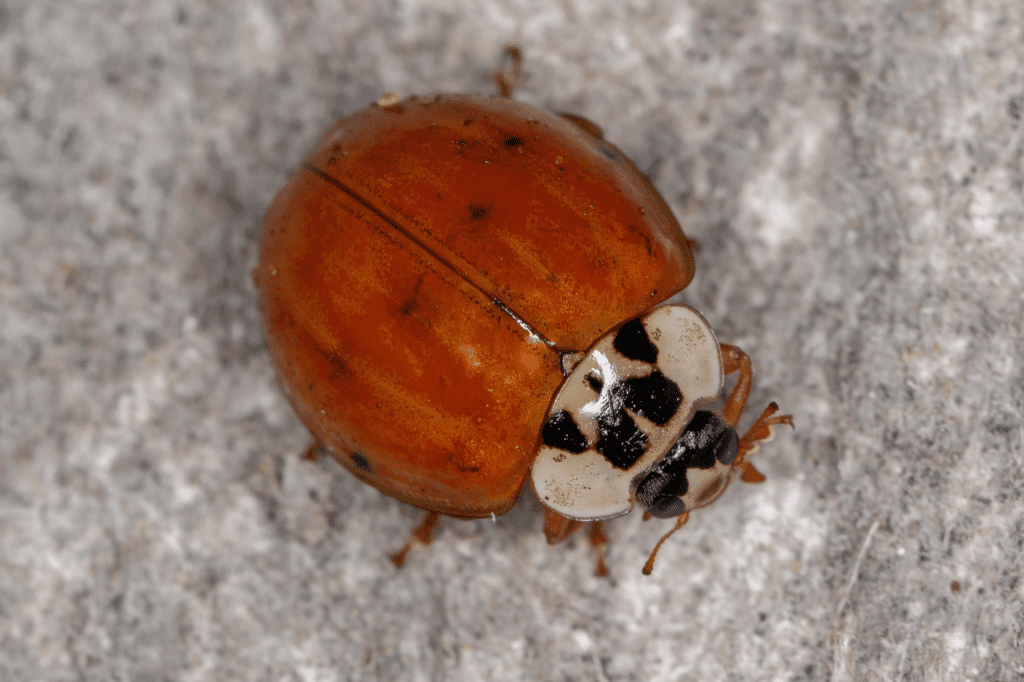
Asian beetles cluster in large groups during autumn on sunny rock outcroppings, at the base of logs, tree trunks, or the walls of buildings and homes. They can multiply quickly but they won’t damage the structure of your house. They could be more accurately described as a nuisance pest and won’t do much besides fly or crawl around your home or place of business. During the fall they look for indoor areas to overwinter in.
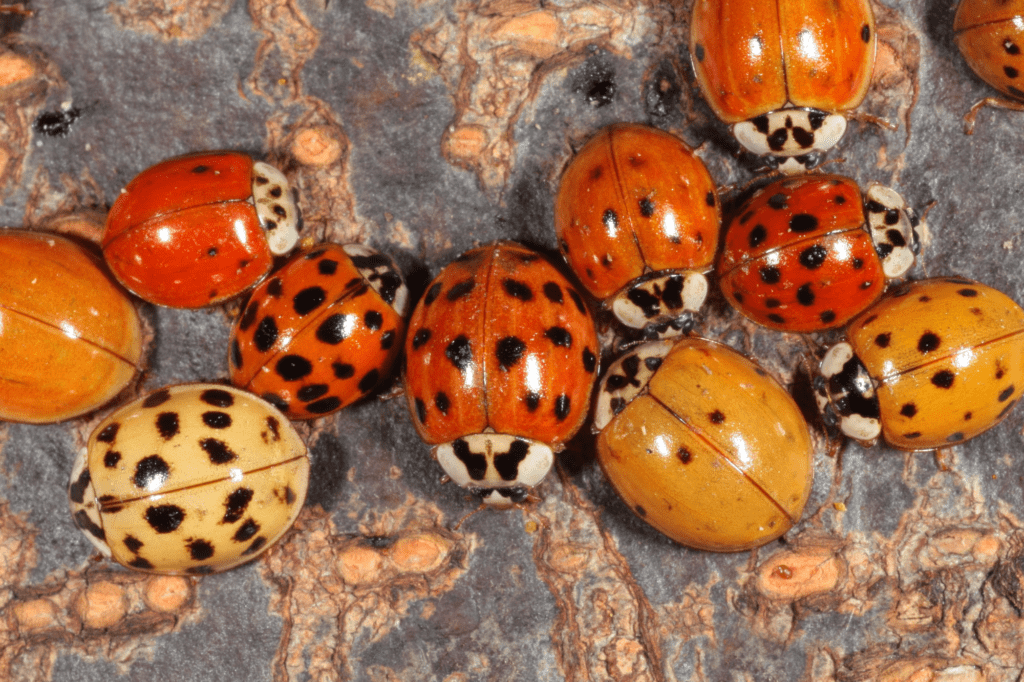
The most common complaint we receive about Asian beetles is their smell. Be careful not to disturb or squash them as they can “reflex bleed,” where a yellow fluid and unpleasant odor is released from their legs. The reflex bleed is part of the Asian beetles’ natural predatory defense. While this bleed carries a notable smell, be careful as it can also stain walls and fabric.
HOW TO PREVENT ASIAN BEETLE INFESTATIONS:
To prevent Asian beetles from overwintering in your home make sure your doors, windows and utility openings are sealed tight and that there are no holes or cracks in your window and door screens.
You can use a vacuum or shop vac to remove Asian beetles with minimal harm to them. Once you have sucked them up using the vacuum make sure to deposit them outside of your home to avoid releasing them into the house again.
HOW CAN MADSEN PEST HELP WITH YOUR ASIAN BEETLE INFESTATION
Madsen Pest Management applies a perimeter barrier treatment to the structures that you do not want the Asian Beetles to infest. This treatment not only kills Asian beetles on contact but leaves a residual in place that will continue to kill new beetles for up to one month.
Don’t let pests ruin your fall fun. If your home has a bug infestation it’s best to call a professional right away. Effective and efficient pest control is what Madsen Pest does best! Give us a call at (715) 791-4777. Our expert technicians are productive and thorough, allowing you to be bug-free this fall!
Related Posts
MOSQUITOS, SPIDERS & TICKS… OH MY!: THE PESTS OF SPRING
The sun is shining, the trees are budding, the temperature’s rising; everything is coming back to life after that long and seemingly endless winter. Along with the arrival of spring comes the reemergence of springtime pests. YUCK! Every year we look forward to the melting snow and springtime growth, but frequently forgotten, along with those…
Drain Cleaning to Avoid Unwanted Pests
Did you know Madsen Pest Management offers drain cleaning services for both commercial and residential customers? Drain cleaning is often thought of when you notice your shower or sink draining a bit slower than it used to, but by then, you could already have a pest problem. There are many types of unwanted pests that…
Madsen Pest Management or DIY?
if you have major pest infestation or an issue with destructive pests such as bed bugs, carpenter ants, cockroaches and fleas., it is best to contact MPM.

